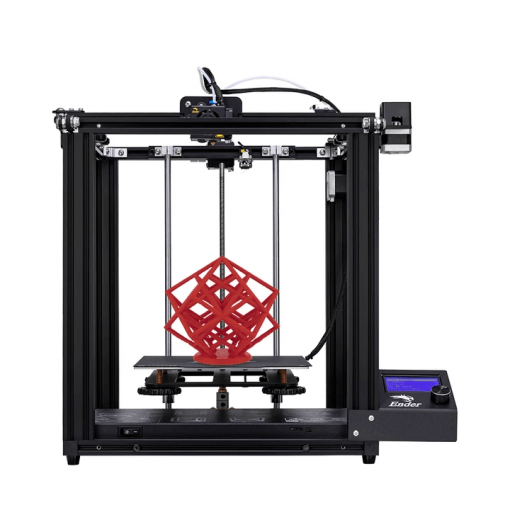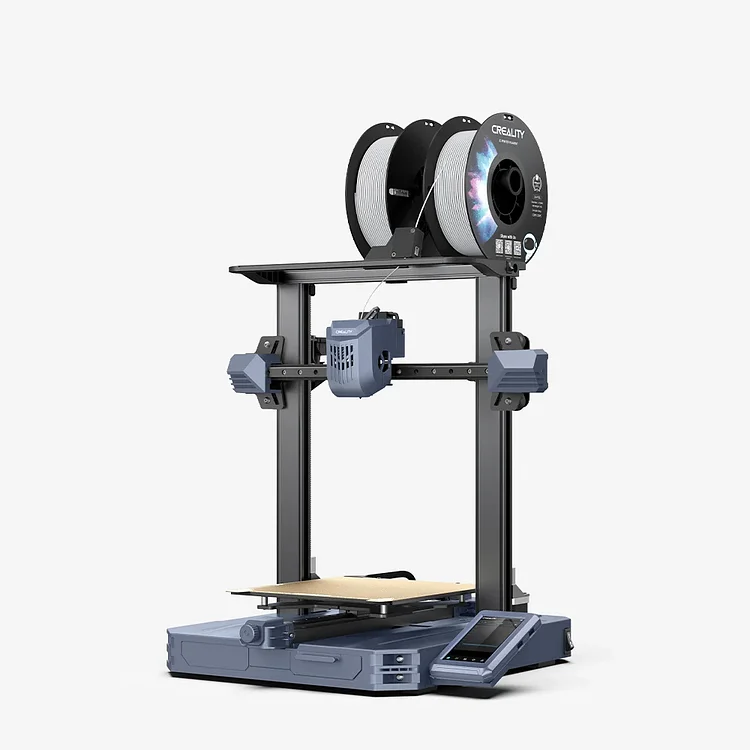Compare Ender 5 vs CR10 SE
Comparison between the best 3D printers
Choose the best 3D printer at the best price. The cheapest 3D printers are here.
Buy a 3D printer here with 3D Fila.
 |
 |
|
| Model | Ender 5[BUY Ender 5] |
CR10 SE |
| Printing Material | Filament | Filament |
| Buy Filament for Creality 3D Ender 5 | Buy Filament forCreality CR10 SE | |
| Estimated price | $399,00 | $386,00 |
| Manufacturer | Creality 3D | Creality |
| Release Year | 2020 | 2023 |
| Print Volume [mm] | 220x220x300 | 220x220x265 |
| Printer Size [mm] | 485x510x552 | 490x470x625 |
| Weight [kg] | 11,8 | 6,9 |
| Power Loss Recovery | YES | NO |
| Enclosed printer | NO | NO |
| Bed Leveling | Manual | |
| Filament End Sensor | NO | NO |
| Bed type | Heated | |
| Power supply system | Bowden | Direct Drive |
| Standard nozzle | 0,4 | 0,4 |
| Maximum Nozzle Temperature [°C] | 255 | 300 |
| Maximum Bed Temperature [°C] | 100 | 110 |
| Maximum printing speed [mm/s] | 180 | 600 |
| Filament holder | YES | YES |
| Camera for supervision | NO | NO |
| Recommended filaments | PLA, TPU, ABS, PETG | PLA, PETG, PET, TPU, PA Wood, ABS, ASA, PA, PLA-CF |
| Recommended slicers | Cura, Simplify, Slic3r | Creality Print, Cura, Simplify3D, PrusaSlicer, Orca Slice |
| Maximum Resolution [mm] | 0,1 | 0,1 |
| Processor | 32 bits | |
| Display | Mono | |
| Power Supply | 24V / 360W | |
| Connectivity | SD / USB | USB, Wifi |
| Operating systems | Windows, Mac, Linux | Windows, Linux, Macbook |
| Date of registration in the system | 2021-04-15 | 2024-07-02 |
| Release date | 2020 | 2023 |
| Extra features | Crealitys Ender 5 stands out with a solid frame and a larger 220 x 220 x 300mm print volume. Its assembly is simple and quick, offering high print quality and speeds of up to 80mm/s. With a magnetic bed, it makes it easy to remove prints. Notable for being hackable and expandable, the Ender 5 continues Crealitys innovative tradition in the affordable 3D printer market. Equipped with a 350W/24V Meanwell power supply, it heats up quickly, in addition to having efficient cable management and modified Marlin firmware. Its unique design includes dedicated stepper motors for each axis and smooth movement on the Y axis, providing more consistent and detailed prints. | The Creality CR10 SE stands out for its printing speed of up to 600 mm/s, easy and intuitive assembly, direct extruder with double gears, hotend with hardened steel nozzle and ceramic heater, automatic leveling with CR-Touch and pressure sensor, and use of Creality OS firmware based on Klipper, with automatic input shaping calibration. It also includes Wi-Fi connectivity, a filament out-of-stock sensor and a robust structure with linear rails on the X and Y axes. |
| Support for multiple colors and materials (AMS and CFS) | NO | NO |
Notes * |
||
| Cost-benefit | 7 / 10 | 7 / 10 |
| Hardware | 1.5 / 10 | 2.4 / 10 |
| Tela | . | . |
| Print volume | 3 / 10 | 3 / 10 |
| Performance | 1 / 10 | 5 / 10 |
| [BUY Ender 5] |
Conclusion |
| In comparing the Creality Ender 5 and CR10 SE 3D printers, it is clear that each model has its own strengths tailored for different user needs. The Ender 5, while an established model with a solid reputation, offers a slightly more substantial print volume and a robust construction, making it a reliable choice for hobbyists who appreciate an expandable platform and a straightforward assembly process. On the other hand, the CR10 SE, released more recently, showcases modern advancements, including significantly higher printing speeds and a streamlined design with features like automatic bed leveling and enhanced connectivity options. Its direct drive system and advanced heater technology contribute to improved performance with various filament types, positioning it favorably for users looking for efficiency and versatility. When considering cost-effectiveness, the CR10 SE presents a better value for its performance-to-price ratio, especially with features that accommodate more complex printing needs. In summary, for those who prioritize speed and the latest features, the CR10 SE is the better choice. Conversely, the Ender 5 remains a solid option for users who prefer simplicity, reliability, and a more manual approach to 3D printing within a slightly lower price range. Ultimately, the choice between the two will depend on individual priorities, whether it be performance, ease of use, or budget considerations. |

